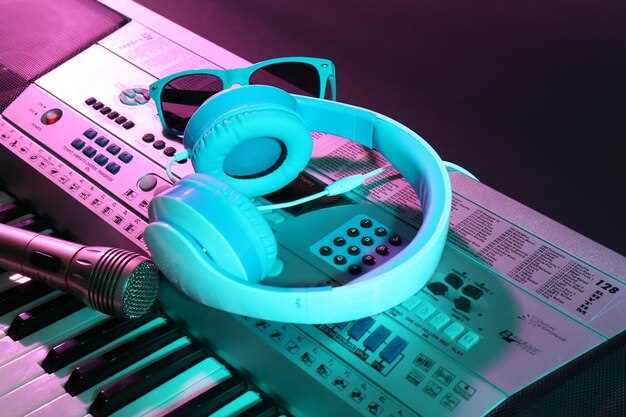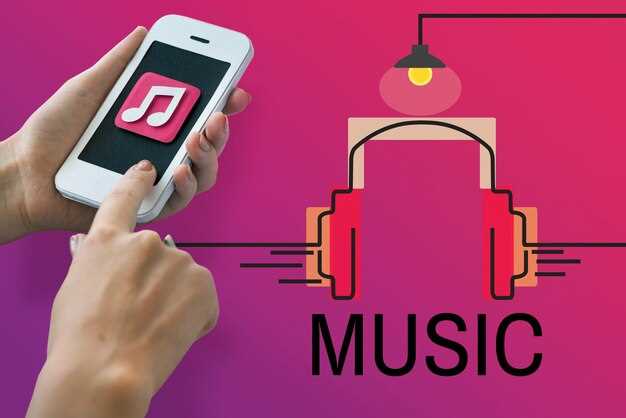Start your 2025 event planning with a powerful blend of AI-generated playlists. These playlists adapt in real-time to the audience’s reactions, creating a dynamic and engaging atmosphere. Utilizing advanced algorithms, AI systems analyze crowd movements, facial expressions, and even social media engagement to curate music that keeps attendees immersed and entertained throughout the event.
Focus on integrating immersive audio-visual experiences with holographic performances. This cutting-edge trend transforms traditional live music events into mesmerizing spectacles. By combining high-quality sound systems with vibrant 3D holograms, you can give your audience the thrill of attending a live concert from their favorite artists, who appear virtually on stage, delivering performances that feel both intimate and grandiose.
Invest in sustainable and eco-friendly event sound systems. As environmental consciousness continues to rise, organizers are increasingly opting for energy-efficient equipment. Solar-powered speakers and wireless technology not only reduce the carbon footprint of events but also offer flexibility in setup, enhancing the overall acoustic experience without compromising on quality.
Consider incorporating multicultural and genre-fusion trends, which have been gaining popularity. In 2025, events celebrate diversity by featuring artists and DJs who blend music styles from different cultures, creating unique soundscapes that resonate with a global audience. This trend not only broadens the cultural reach of events but also adds a rich, eclectic mix to the musical experience.
Emerging Genres Shaping the Event Landscape

Don’t overlook the impact of the genre “Atmospheric Trap” for your next event. Its fusion of ambient soundscapes with the rhythmic elements of trap creates an immersive experience that captivates audiences. Consider incorporating tracks with evocative, layered beats and subtle melodies to set a dynamic ambiance that keeps attendees engaged.
Turn your attention to “Hyperpop”, which is making waves with its supercharged, eclectic style. This genre’s blend of pop, electronic, and experimental elements delivers an energetic feel that resonates with younger crowds. Integrate hyperpop tracks into your playlists for lively sections of your event where high energy is required.
Explore the growing influence of “Folk Electronic”, a genre that enriches traditional folk music with electronic beats, giving a fresh twist to timeless sounds. This blend is perfect for outdoor or themed events where authenticity meets modernity. Choose artists who are known for their innovative adaptations of folk melodies to add a unique touch to the atmosphere.
Consider the up-and-coming sound of “Afro Fusion,” which combines Afrobeats with elements from other genres like reggae and hip hop. This lively genre has universal appeal, encouraging attendees to move and interact. It’s ideal for setting a vibrant and inclusive tone at multicultural events.
Don’t forget about “Psychedelic Jazz,” which modernizes classic jazz with psychedelic influences, creating a multi-dimensional soundscape. Opt for this genre when you desire an avant-garde yet sophisticated vibe, ideal for events that focus on creativity and exploration.
Fusion of Traditional and Electronic Elements
Achieve a harmonious blend by incorporating instruments like the violin or sitar with synthesizers and electronic beats. This mixture captivates audiences by offering a fresh, unique sound that respects musical heritage while embracing innovation. Consider collaborating with musicians skilled in traditional instruments and pairing them with electronic music producers to create vibrant soundscapes. Live performances benefit tremendously from this approach, as audiences appreciate both the soulful authenticity of traditional sounds and the dynamic energy of electronic music.
Experimentation is key. Try layering a haunting flute melody over a bass-driven techno track, or blend a didgeridoo with ambient synth pads. These combinations create an auditory journey that’s both familiar and exciting. Don’t shy away from using digital tools to manipulate traditional sounds, adding depth and complexity to your compositions.
To achieve this balance at your event, use software that allows for real-time sound mixing and integration. Look for platforms that provide virtual instruments and effects specifically designed for fusing different genres. This also enables the customization of sets in response to audience feedback, enhancing the overall experience.
By embracing this fusion, you not only stand out but also pay homage to musical traditions while pushing boundaries forward. This trend resonates across cultural lines, making your event a memorable occasion that appeals to diverse audiences. Ensure your sound system is robust enough to handle this diverse range of frequencies, from the earthy tones of a djembe to the crisp notes of an electronic arpeggio, guaranteeing an unforgettable aural experience.
The Rising Popularity of World Music in Global Events
Include diverse musical acts from different countries to capture the spirit and energy of modern global events. With audiences increasingly drawn to the unique and diverse sounds from various cultures, integrating world music can set your event apart. Consider engaging artists who specialize in Afrobeat, Latin rhythms, or traditional Asian music to bring fresh and vibrant energy to your event. These genres not only offer a distinctive sound but also provide cross-cultural experiences attendees will remember.
World music connects audiences by highlighting universal themes through cultural expressions. Incorporating songs in multiple languages can resonate with diverse crowds, promoting unity and inclusion. For corporate and diplomatic gatherings, world music serves as an engaging platform for enhancing cultural dialogue and networking.
Streaming services report a surge in world music consumption, indicating a growing appetite for these sounds. Leverage this trend by collaborating with popular world music artists whose online presence can boost your event’s visibility. Engaging these artists on social media creates excitement and anticipation before the event, ensuring a wider reach.
Finally, harness the authenticity of live performances by including traditional instruments and interactive elements. Whether it’s a Hungarian cimbalom, Indian tabla, or Brazilian berimbau, involving these instruments in live performances captivates listeners and offers an authentic cultural experience. Offering interactive sessions where attendees can learn a dance or play an instrument creates a more immersive and memorable experience.
Role of AI-Composed Music in Customizing Experiences
Utilize AI-composed music to create immersive and personalized atmospheres for events. By analyzing attendee data, AI algorithms can generate music that reflects individual preferences, enhancing engagement. For instance, AI can adapt background scores in real-time, considering audience reactions and mood changes, ensuring a dynamic and tailored experience throughout the event.
Capitalize on AI’s ability to seamlessly blend genres and produce unique compositions that resonate with diverse audiences. This technology allows event planners to create a coherent soundscape that aligns with thematic elements and highlights key moments during the occasion. By incorporating AI-composed tracks, you can maintain audience interest and provide a memorable auditory journey.
Integrating AI-generated music doesn’t just elevate attendee satisfaction; it also offers logistical benefits, such as reducing the need for extensive human resources dedicated to audio management. With AI handling complex musical arrangements, event organizers can focus their attention on other crucial aspects, ensuring all elements come together harmoniously. Leveraging AI to craft customized soundscapes can foster a more intimate and engaging environment that resonates with attendees long after the event concludes.
Environmental Soundscapes for Eco-friendly Gatherings
Ensure a memorable eco-friendly event by incorporating live environmental soundscapes. Focus on natural audio elements like birdsong, ocean waves, or rustling leaves to create a calming and immersive atmosphere. Use recordings from local environments to reduce carbon footprint and support local ecosystems.
Invest in solar-powered speakers and wireless technology to minimize energy consumption. These devices not only lower your event’s environmental impact but also provide flexibility in outdoor settings. Research shows that ambient nature sounds can enhance attendees’ mood and promote relaxation, leading to a more enjoyable experience.
Consider collaborating with sound artists who specialize in eco-acoustic compositions. Their expertise can transform ordinary spaces into auditory landscapes that resonate with the event’s theme. By integrating custom soundscapes, you also support artists dedicated to sustainability and innovation in audio experiences.
| Sound Elements | Benefits |
|---|---|
| Birdsong | Enhances mood and focus |
| Ocean Waves | Promotes relaxation |
| Rustling Leaves | Creates a tranquil environment |
Maximize impact by scheduling soundscapes during key moments of the event, such as transitions between activities or as a backdrop during networking sessions. Adjust volume levels carefully to avoid overshadowing conversations. By thoughtfully integrating environmental soundscapes, you’ll host an event that is both innovative and kind to the planet.
Technological Innovations Influencing Event Music

Utilize AI-driven music personalization to tailor your event’s soundtrack directly to the preferences of your guests. By leveraging machine learning algorithms, event organizers can analyze attendees’ music tastes from their social media profiles to create unique playlists that resonate across demographics and genres.
Implement AR and VR technologies to elevate your live music performances. By merging real and virtual worlds, musicians can create interactive experiences that engage audiences on a deeper level. Consider using virtual reality to let attendees experience front-row seats from anywhere in the venue, making the performance more inclusive and memorable.
Incorporate immersive audio systems such as 3D sound or spatial audio to transform traditional sound setups. These systems distribute sound in three dimensions, placing listeners in the center of the action and enhancing their auditory experience. This technology can be particularly effective in outdoor events or unconventional venues, where standard acoustics may fall short.
- Blockchain Technology: Employ blockchain for transparent and secure ticket sales, ensuring that artists receive fair compensation and reducing fraud. By tokenizing tickets, organizers can track sales and streamline entry processes more efficiently.
- Live Streaming Innovations: Use advanced live streaming platforms to broaden your event’s reach. Tools like multi-angle viewing and real-time audience interaction can replicate the energy of in-person concerts, while also expanding your audience globally.
- Smart Wearables Integration: Encourage guests to engage with music via smart wearables. Devices can sync with event music setups to provide personalized immersive experiences, such as vibrating wristbands that pulse with the music beat.
Adopt green technologies to make music events more sustainable. Portable solar generators and energy-efficient equipment help reduce the carbon footprint, aligning your event with eco-conscious values and appealing to environmentally aware audiences.
Augmented Reality (AR) and Virtual Reality (VR) Music Experiences
Enhance your event by incorporating AR and VR technology into the musical experience, providing attendees with an immersive way to interact with performances. Start by replacing traditional stages with VR sets, allowing guests to feel as if they’re part of the performance, no matter where they’re located in the venue. This creates a personal connection with the music and artists, elevating the overall atmosphere.
Introduce AR elements that interact with live performances to captivate audiences. Visuals triggered by music cues can transform physical venues into dynamic canvases, creating a seamless blend between the real and digital worlds. This not only captures attention but also encourages social media sharing, amplifying the reach of your event.
Create a unique selling point by offering guests VR headsets for an exclusive backstage tour or a chance to “perform” with their favorite bands. This turns a conventional concert into a multifaceted experience, appealing to tech-savvy attendees and music lovers alike.
Curate playlists or guided musical journeys in immersive environments, allowing guests to explore different musical eras, genres, and cultures in a way that’s interactive and engaging. This transformative approach adds depth to both corporate events and festivals, setting a new standard for what attendees can expect.
Personalization through AI and Machine Learning
Utilize AI-driven platforms to craft personalized playlists that adapt in real-time to your audience’s preferences. These systems analyze data such as song requests, social media interactions, and previous listening habits to tailor music selections that resonate with event attendees.
Integrate machine learning algorithms to predict emerging trends and anticipate guests’ musical tastes even before they realize them. This foresight helps create an engaging and immersive auditory experience that keeps the audience captivated.
Implement smart recommendation engines that consider demographic factors, event type, and current music charts to suggest tracks that fit the event’s mood and theme. Personalization at this level maximizes engagement and ensures that the musical experience feels uniquely curated.
Leverage voice recognition technology to enable seamless song requests and interactions, making it easier for guests to feel connected and involved in the event. When attendees can effortlessly contribute to the music selection, it enhances their enjoyment and satisfaction.
Develop interactive applications that allow guests to vote on upcoming tracks or propose their favorite artists, turning the event into an interactive music festival. This approach fosters a sense of community and belonging, enriching the overall experience by linking personal input with the collective atmosphere.
Blockchain Technology for Music Rights and Distribution
Adopt blockchain platforms to streamline music rights management and distribution. This technology ensures transparency and efficiency by recording every transaction on an immutable ledger. Here are key benefits and strategies for using blockchain in the music industry:
- Ownership Clarity: Blockchain provides a transparent and decentralized system where ownership and rights of musical pieces are clearly recorded and easily accessible to all parties involved. This eliminates disputes over rightful authorship or ownership.
- Royalty Tracking: With smart contracts, royalties can be automatically distributed to artists, producers, and stakeholders based on predefined conditions. This reduces administrative costs and delays in payments.
- Direct-to-Fan Sales: Artists can sell their music directly to fans without intermediaries. Platforms using blockchain enable musicians to receive a larger share of the revenue and engage directly with their audience.
- Security and Fraud Prevention: The decentralized nature of blockchain makes it extremely difficult for malicious actors to alter transaction records. This strengthens the integrity of distribution and financial transactions.
- Innovative Revenue Streams: Musicians can explore new revenue opportunities like tokenizing their music, selling limited edition tracks as NFTs, and offering exclusive content to stakeholders. These strategies provide diversified income for artists.
By leveraging blockchain, the music industry can enhance transparency, speed up transactions, and create direct engagement channels between artists and audiences, making the ecosystem fairer and more artist-friendly.
Live Streaming and Hybrid Event Innovations
Integrate interactive chat features into your live stream to boost audience engagement. Encouraging live Q&A sessions and real-time polls not only keeps the audience involved but also provides valuable feedback for future events. Utilize multi-camera setups to offer diverse viewing angles, making the experience more immersive for remote attendees. Make use of platforms like Zoom or Hopin, which are tailored for hybrid events and offer tools specifically for integrating live and virtual audiences.
Monetize your live stream through tiered ticketing systems, offering exclusive content for higher-paying attendees, such as behind-the-scenes footage or one-on-one sessions with keynote speakers. Collaborate with influencers to widen your event’s reach and tap into new audience segments. Ensure high-quality streaming by investing in robust internet infrastructure and standby technical support to address any potential issues promptly. Partner with production companies experienced in hybrid events to create a seamless blend of live and virtual components, enhancing the overall experience for all participants.
Video:

Spotify Pop Hits 2025 🎵 Trending Pop Songs 2025 | Bruno Mars, Lady Gaga, Billie Eilish, Dua Lipa
Spotify Pop Hits 2025 🎵 Trending Pop Songs 2025 | Bruno Mars, Lady Gaga, Billie Eilish, Dua Lipa
Q&A:

What are the most anticipated music genres for events in 2025?
In 2025, experts predict a rise in the popularity of genres like electronic pop, Afrobeat, and fusion music. These genres are expected to dominate both large gatherings and intimate events due to their ability to create energetic and engaging atmospheres. Organizers and DJs are likely to incorporate these sounds to appeal to diverse audiences and keep the event lively.
How will technology influence music trends for events in 2025?
Technology is set to play a significant role in shaping music trends for events. With advancements in virtual reality and augmented reality, audiences might experience immersive musical performances that blend the physical and digital worlds. Additionally, AI-generated music may find its place in events, allowing for highly personalized playlists and soundscapes tailored to the preferences of attendees.
Will live performances remain important for events in 2025?
Live performances will continue to hold a special place in events, as they offer a unique experience that recordings cannot replicate. Organizers are likely to focus on creating hybrid events that feature both live performances and digital experiences, ensuring that attendees have a memorable time whether they are present on-site or joining remotely.
What role will sustainability play in event music trends in 2025?
Sustainability is becoming increasingly important in event planning, and music is no exception. In 2025, there will be a shift towards using eco-friendly sound equipment and production techniques. Artists and event planners are exploring ways to reduce the carbon footprint of their events, such as by leveraging solar-powered stages and minimizing waste associated with music production and performance setups.
How are events expected to incorporate multicultural music trends by 2025?
By 2025, multicultural music trends will blend diverse musical traditions, catering to global audiences. Events are expected to embrace a wide range of cultural influences, incorporating elements from Latin, Asian, African, and Middle Eastern music. This fusion of styles not only enriches the cultural aspect of the event but also broadens its appeal, attracting attendees from different backgrounds and fostering a sense of inclusivity and diversity.
